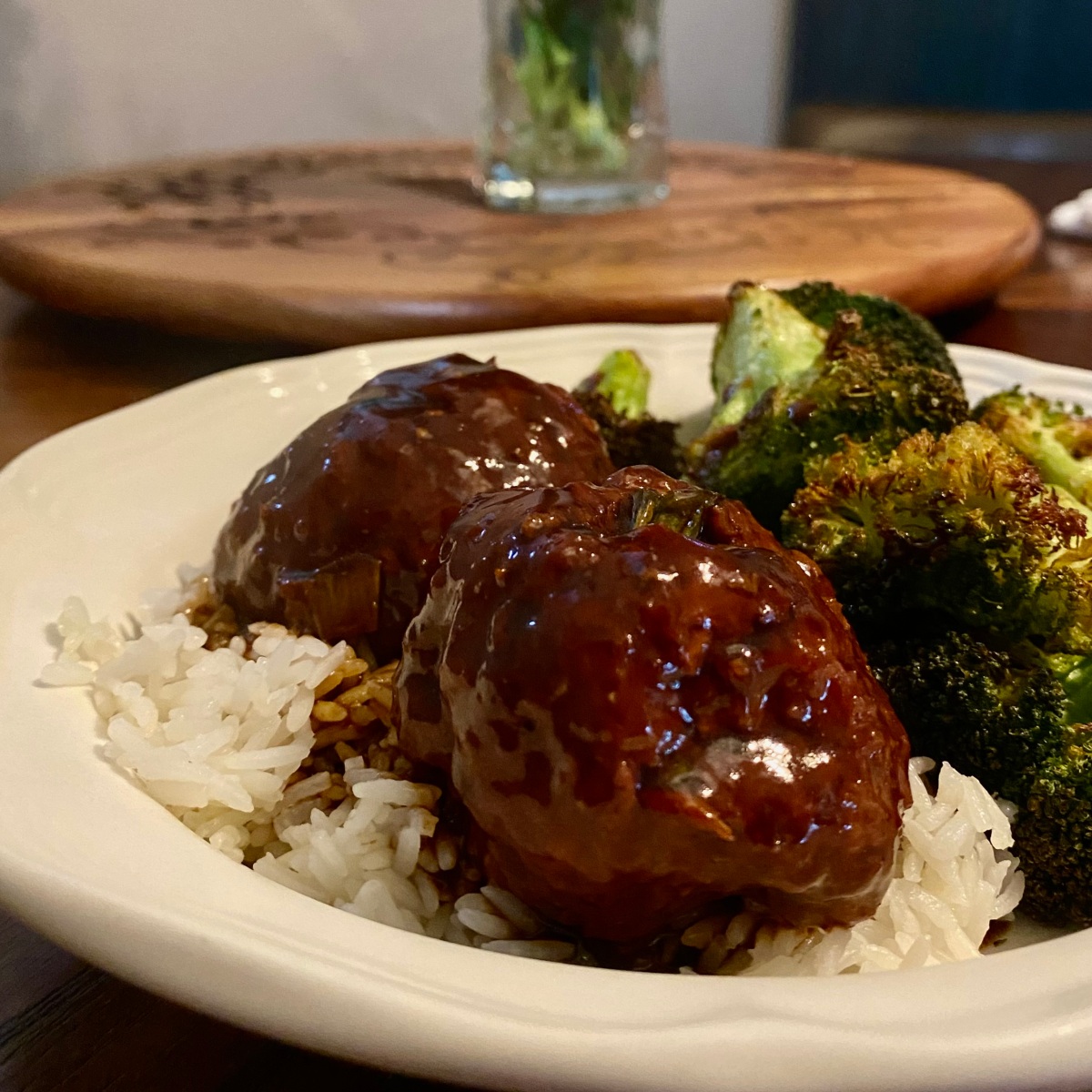I have tried multiple “hidden-liver” recipes, with varying levels of success in hiding the liver taste. This recipe has zero taste of liver, which is owed to the flavorful aromatics in the meatballs and the rich, sticky sauce. Plus, each serving boasts over 30 grams of protein.
Before you make your meatballs, purchase grass-fed beef liver from a trusted source and soak it in milk over night to dampen the strong flavor. Then, blend in a high-power blender or food processor until a puree forms. You can then freeze this puree in 1 oz portions using a silicone ice cube tray or freezer bags, taking out a few portions each time you cook ground beef.
This recipe makes 10 generous portions, with a large amount of sauce to pour over your sides. I typically serve these with rice and broccoli, but you could swap the regular rice for cauliflower rice or use other veggies like bok choy, zucchini, or snow peas. This recipe freezes exceptionally well, and is a perfect last-minute freezer meal. If you freeze them, make sure to add enough sauce to the freezer portion to coat the meatballs, then reheat in a saucepan with an added splash of water.
Recipe makes 10 servings.
Meatball Ingredients:
- 2 lb ground beef
- 1 lb ground pork
- 4 oz liver puree
- 1 small knob ginger, minced (about 2 tablespoons)
- 5 cloves garlic, minced
- 1 bunch spring onions, thinly sliced
- 1 tsp salt
- 2 tablespoons gochujang (a Korean fermented chili paste — this is necessary to get the right flavor. You can find it at most grocery stores, or online)
- 1/2 cup plain breadcrumbs
- 3 eggs
Sauce Ingredients:
- 3 cups water or broth
- 1 cup regular soy sauce
- 1/4 cup dark soy sauce (optional)
- 3/4 cup white vinegar
- 1/3 – 1/2 cup brown sugar (or honey)
- 3 tablespoons gochujang
- 3 tablespoons sesame oil
- 2 tablespoons arrowroot powder (or cornstarch)
Instructions:
- Preheat oven to 400 degrees.
- In a large bowl, mix all of the meatball ingredients. Use your hands when mixing to get everything evenly combined, especially the liver puree.
- Form meatballs that are each approx. 2.5 oz in size — this should yield around 20 meatballs.
- Bake meatballs on a sheet pan for 20-25 min in oven, or until internal temp reaches 160 degrees.
- In a large wok or pot, add all of the sauce ingredients (including the arrowroot powder) and whisk until everything is well-dissolved. Allow to simmer, whisking occasionally, until the sauce is thickened.
- Add the meatballs to the sauce, then serve!
